Figure shows the p−V diagram of an ideal gas undergoing a change of state from A to B. Four different parts I, II, III and IV as shown in the figure may lead to the same change of state. ltBrgt 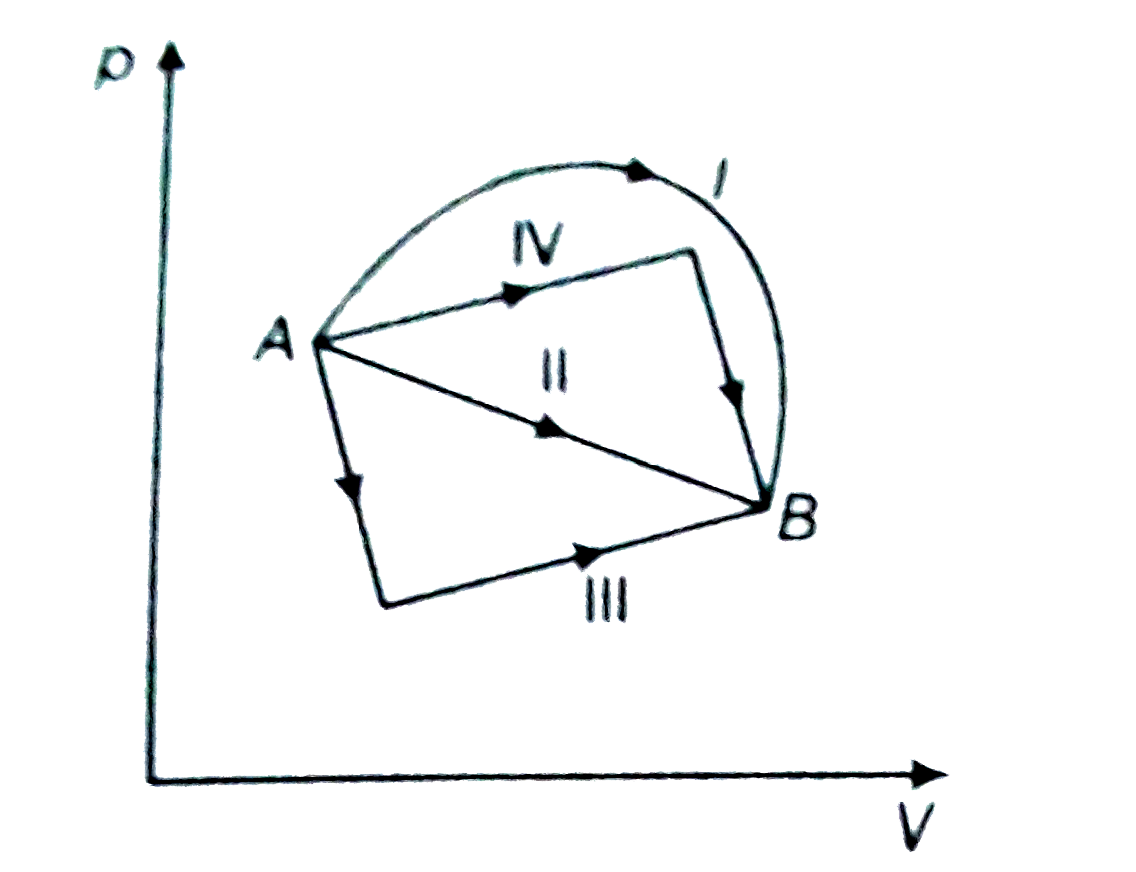
Change in internal energy is same in IV and III cases, but not in I and II
Change in internal energy is same in all the four cases
Work done is maximum in case I
Work done in minimum in case II
The correct Answer is:B, C
Change in internal energy for the process A to B
dUA→B=nCvdT=nCv(TB−TA)
Work depends only on temperature at A and B.
Work done for A to B, dWA→B= Area under the p−V curve which is maximum for the path I.
Topper's Solved these Questions
- THERMODYNAMICS BOOK - NCERT EXEMPLARCHAPTER - THERMODYNAMICS EXERCISE - VERY SHORT ANSWER TYPE QUESTIONS
5 Videos
- THERMODYNAMICS BOOK - NCERT EXEMPLARCHAPTER - THERMODYNAMICS EXERCISE - SHORT ANSWER TYPE QUESTIONS
6 Videos
- THERMODYNAMICS BOOK - NCERT EXEMPLARCHAPTER - THERMODYNAMICS EXERCISE - LONG ANSWER TYPE QUESTIONS
5 Videos
- THERMAL PROPERTIES OF MATTERBOOK - NCERT EXEMPLARCHAPTER - THERMAL PROPERTIES OF MATTEREXERCISE - Very short Answer type Questions
15 Videos
- UNITS AND MEASUREMENTS BOOK - NCERT EXEMPLARCHAPTER - UNITS AND MEASUREMENTS EXERCISE - Long Answer Type Questions
9 Videos
Similar Questions
One mole of an ideal diatomic gas undergoes a transition from A to B along a path AB as shown in the figure

The change to internal energy of the gas during the transition is
View SolutionA gas undergoes change in its state from position A to position B via three different path as shown in Fig. Select the correct alternatives :

View Solution
Knowledge Check
(figure). Shows the P−V diagram of an ideal gas undergoing a change of state from A to B. Four different process I, II, III, IV, as shown in (figure) may lead to the same change of state.
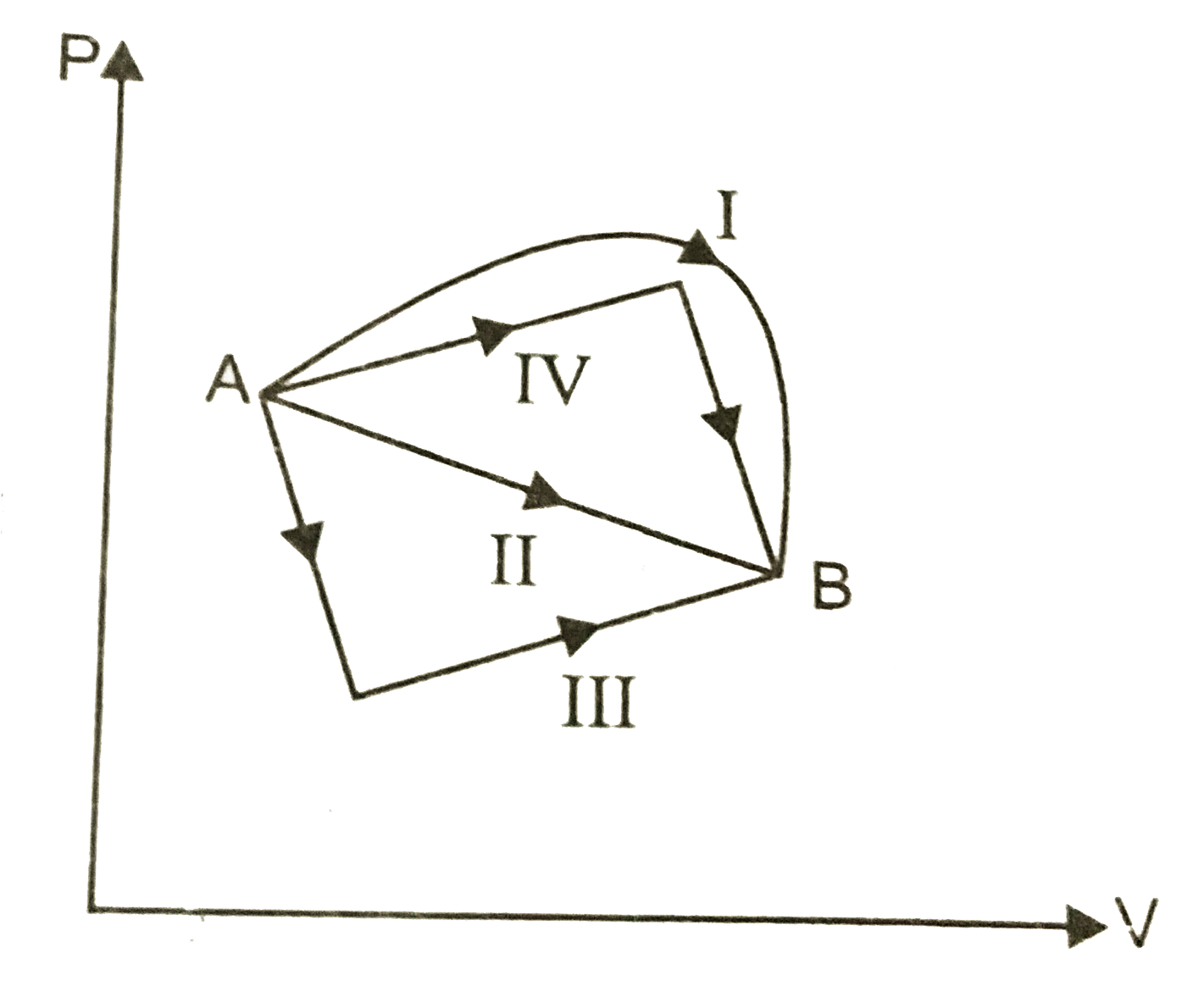 AChange in internal energy is same in IV and III cases, bit not in I and II.BChange in internal energy is same in all the four cases.CWork done is maximum in case IDWork done in minimum in case II.
AChange in internal energy is same in IV and III cases, bit not in I and II.BChange in internal energy is same in all the four cases.CWork done is maximum in case IDWork done in minimum in case II.(figure). Shows the P−V diagram of an ideal gas undergoing a change of state from A to B. Four different process I, II, III, IV, as shown in (figure) may lead to the same change of state.
 AChange in internal energy is same in IV and III cases but not in I and IIBChange in internal energy is same in all the four casesCWork done is maximum is Case IDWork done is minimum in case II
AChange in internal energy is same in IV and III cases but not in I and IIBChange in internal energy is same in all the four casesCWork done is maximum is Case IDWork done is minimum in case IIThe given P - V diagram is showing an ideal gas undergoing a change of state different paths I, II, III and IV that lead to the same change of state, then change in internal energy is
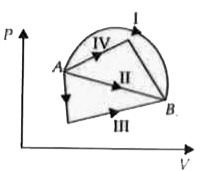 Amaximum along path 1Bmaximum and same along paths III and IVCminimum along path IIDsame in all the four cases
Amaximum along path 1Bmaximum and same along paths III and IVCminimum along path IIDsame in all the four cases
The process in which an ideal gas undergoes change from X to Y as shown in the figure diagram is :
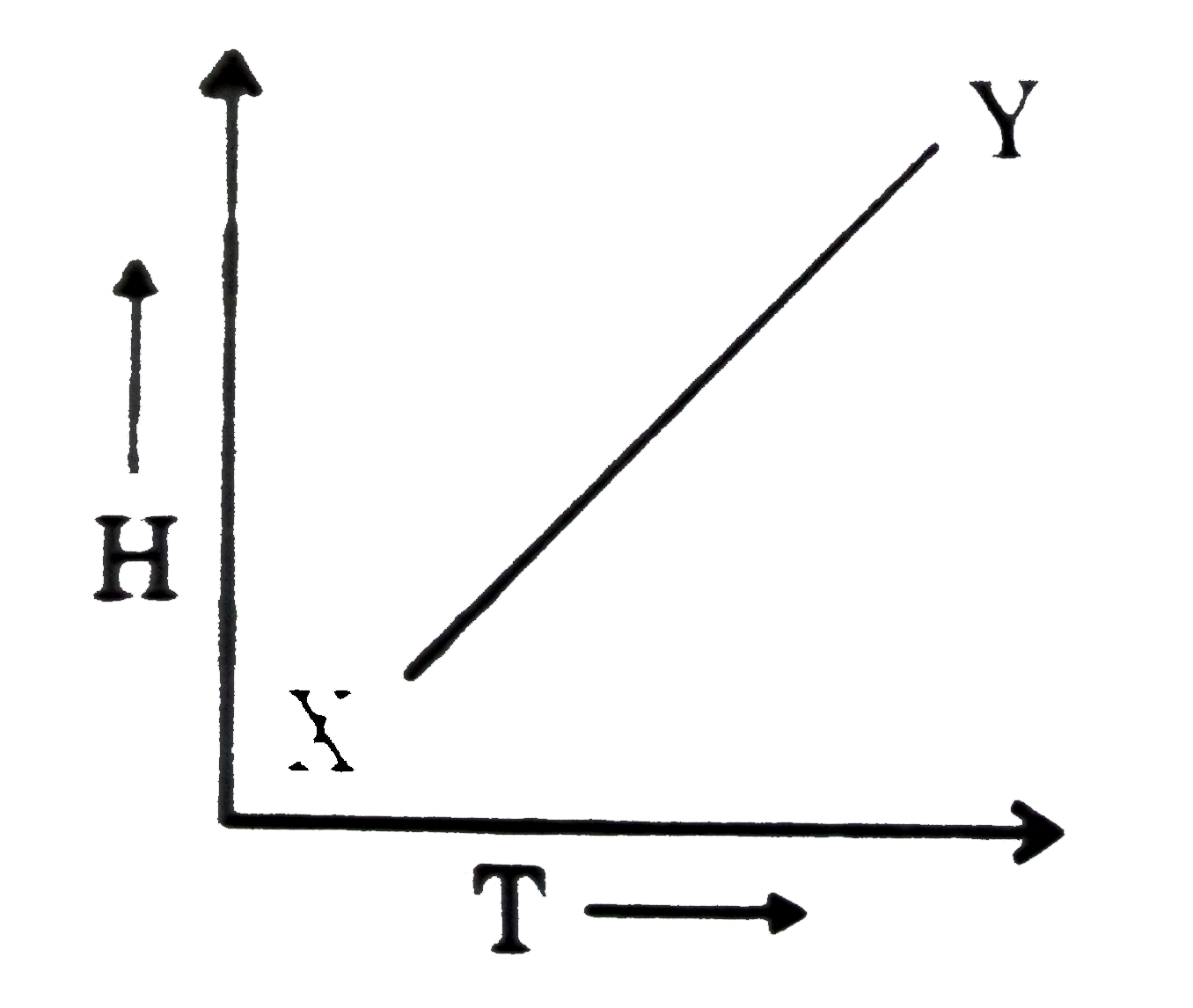
View SolutionOne mole of an ideal diatomic gas undergoes a transition from A to B along a path AB as shown in the figure. The change in internal energy of the gas during the transition is
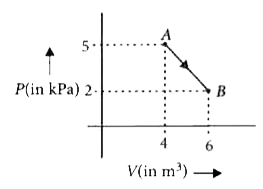
View SolutionAn ideal gas is taken from state A to state B following three different paths as shown in P-V diagram. Which one of the following is true ?
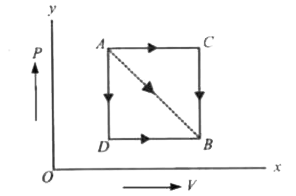
View SolutionOne mole of an ideal gas is taken from state A to state B by three different processes (a) ACB, (b) ADB and (c ) AEB as shown in the P−V diagram. The heat absorbed by the gas is
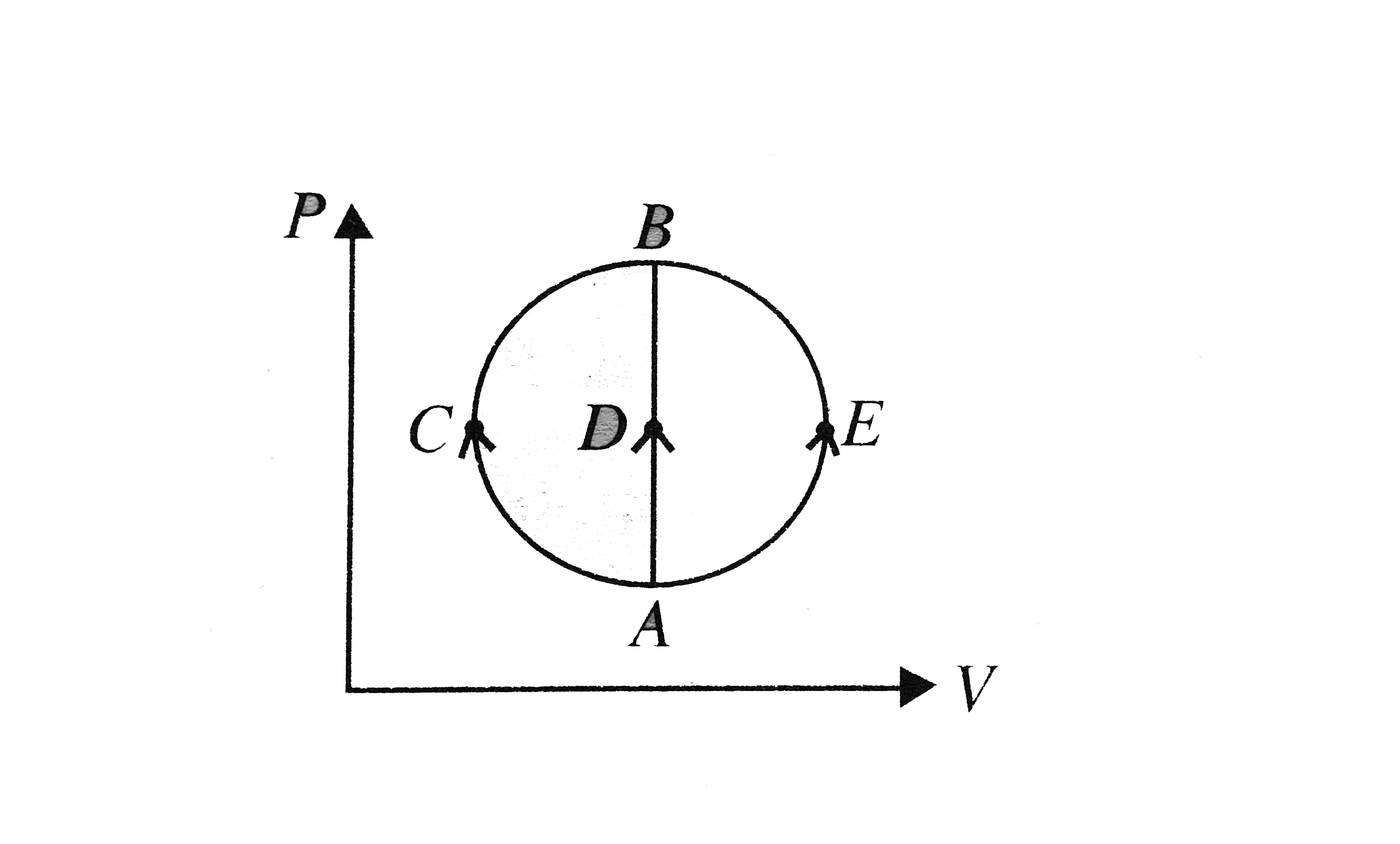
View SolutionOne mole of an ideal diatomic gas undergoes a transition from A to B along a path AB as shown in the figure,
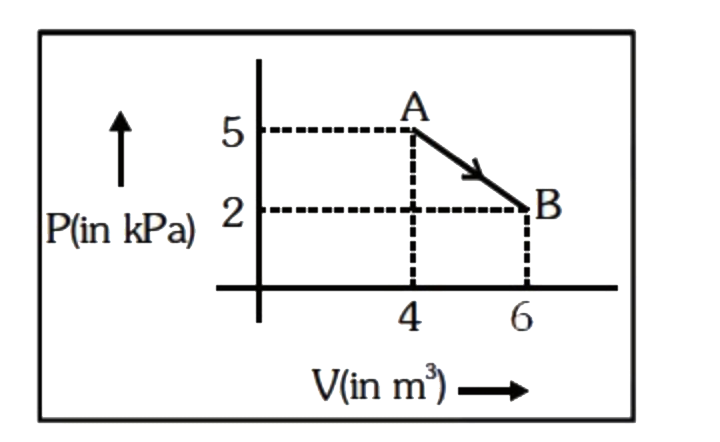
The change in internal energy of the gas during the transition is :
View Solution
